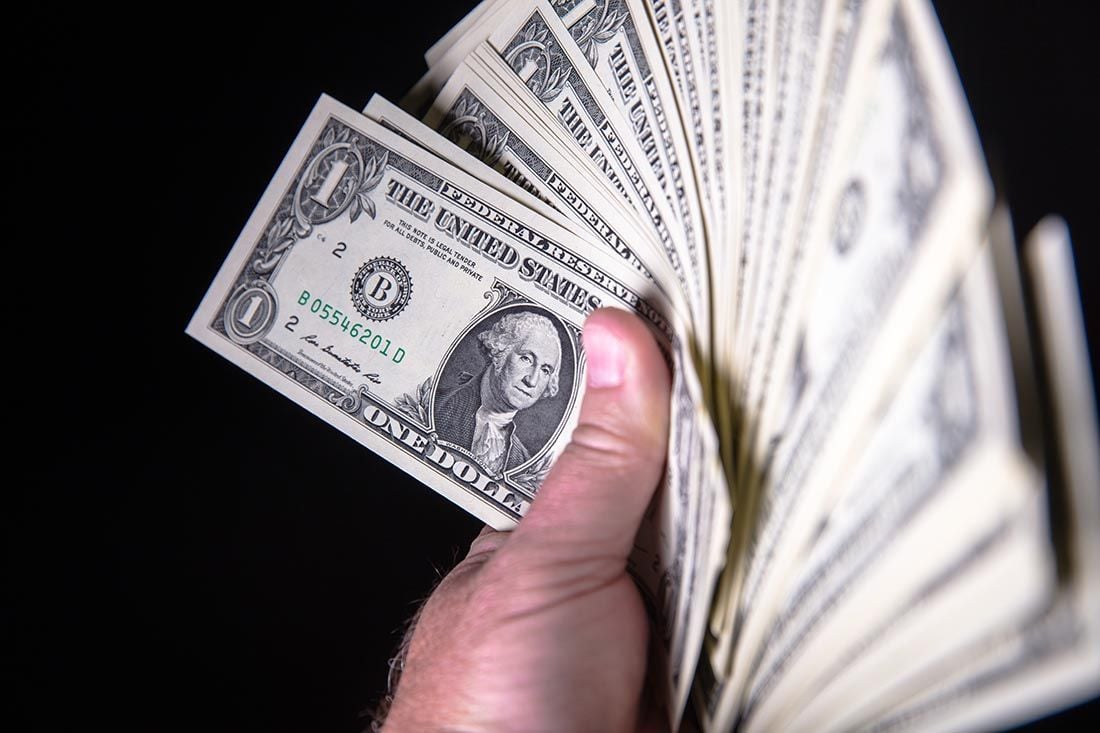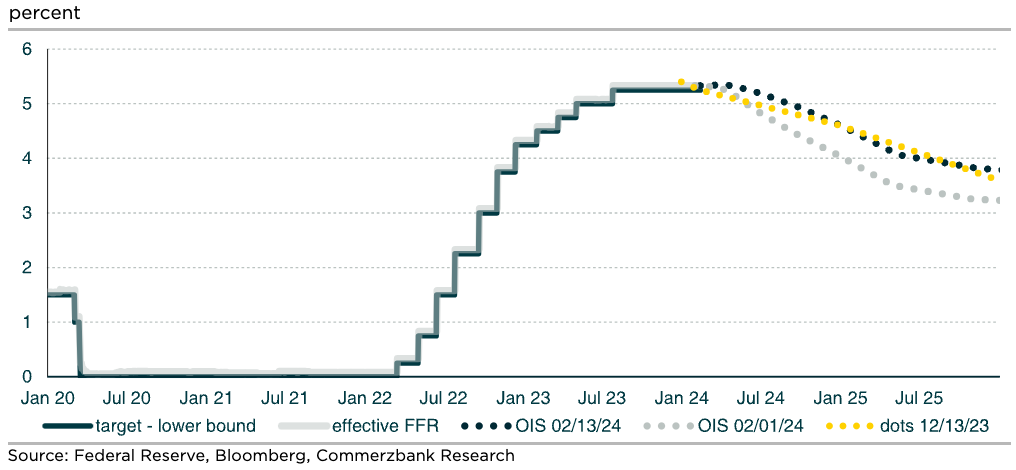Dollar Adjustment Nearly Complete as the Market Bows to the Fed
- Written by: Gary Howes
-

Image © Adobe Images
The lion's share of the Dollar's move higher might be behind us as financial markets finally fall into line with the Federal Reserve's warning that it would resist cutting interest rates too soon.
"Don't fight the Fed would seem to be the lesson so far this year," says Daragh Maher, Head of Research for the Americas at HSBC.
HSBC holds a bullish thesis on the Dollar in 2024, arguing that the market would have to come around to its view that there would be far less by way of interest rate cuts in the coming months than was popularly assumed.
"In early January, the markets were priced for 168bp of easing in 2024 compared to the Fed's median dot suggesting just 75bp of easing...Yesterday’s higher-than-expected U.S. CPI print has tempered rate cut pricing further, with just 93bp in the price now," says Maher.
Analysis from Ulrich Leuchtmann, Head of FX and Commodity Research at Commerzbank, reveals the Dollar's strength is due to the fact that longer-term Fed rate expectations have also started to move higher.
"The market is no longer pricing in faster rate cuts than the FOMC itself predicted in the form of the 'dots' in December. For the first time, the market is swallowing the Fed's story: that rate cuts will be gradual," he explains, presenting the below chart:
The Dollar is 2024's best-performing currency amidst the significant reappraisal of the outlook for the U.S. interest rates.
The degree to which the rate curve (as per the above chart) is further priced higher will influence how far the Dollar can advance.
Having been vindicated by its bullish USD view, HSBC says most of the move in response to shifts in interest rate expectations might have been completed, potentially limiting the scope for significant appreciation.
"This reappraisal has long been a key part of our USD bullish view, aiding the currency both through higher yields and the hit to risk appetite. It may still have further to run, but the lion’s share of the rate adjustment is likely already done," says Maher.
Above: The Dollar index (top) moves up as two-year Treasury yields move up. Treasury yields meanwhile respond to expectations for the Fed funds rate to stay higher for longer.
The market could yet price out rate cuts and end up being more 'hawkish' than the Fed, but the warning to not fight the Fed should be heeded.
The convergence between Fed guidance and market expectations is an implicit realisation by investors who now see the central bank as credible.
"Yesterday's CPI report is not necessarily an indicator of a worsening trend, but it does validate the Fed's wise rejection of the temptation to prioritise a soft landing over the commitment to their mandate of maintaining price stability. Had this latest CPI report been accompanied by more dovish talk from the Fed, the risk of higher inflation expectations could have increased," says financial historian and senior investment advisor Mark J. Higgins.
Higgins says there are two events in U.S. financial history that help explain the post-pandemic inflation spike and the Federal Reserve's current monetary policies.
The first was the 1919-1920 post-World War I/Great Influenza inflation:
"It was caused by many of the same underlying factors, such as the sudden release of pent-up consumer demand and massive supply chain disruptions," says Higgins.
The second is the Great Inflation of 1965-1982:
"One of the primary causes of the Great Inflation was the Fed's repeated, premature abandonment of tight monetary policies, which allowed elevated inflation expectations to become entrenched," says Higgins.
He explains that in 2021, the Fed was guilty of overlooking the first event, which explains why they initially mislabeled post-COVID inflation as transitory.
"However, in 2024, they are unlikely to overlook the second event, if only due to its recency. This is why the Fed wisely backtracked from the premature dovish tilt that they signalled in December 2023," says Higgins.


